Although asphalt shingles are the most commonly used roofing material in the U.S., their durability and resistance to environmental factors are relatively lower compared to materials such as steel or concrete. During their roughly 30-year lifespan, you may encounter various types of damage — some that can be repaired on your own, some that require professional help, and others that may call for full replacement. In this article, we’ll go over the most common types of asphalt shingle damage and what to do in each situation.
What Environmental Factors Affect Your Asphalt Roof’s Lifespan?
As a Glenview exterior contractor with more than 20 years of experience, we can confidently point to the main threats to asphalt roofs in Illinois. The continental climate and proximity to Lake Michigan have a significant impact on homes throughout the Chicago suburbs. Here’s how the local environment affects your asphalt shingles:
High Temperatures in Summer
Under intense heat (shingles can reach 155°F–175°F), asphalt softens and loses elasticity. Over time, oils and plasticizers evaporate from the bitumen, causing brittleness and cracking. Thermal expansion also creates micro-movements, which weaken joints and adhesive layers.
Poor attic ventilation makes this problem worse. If you live in a state with strong sunlight exposure (such as Texas, Nevada, Georgia, or Florida), it’s worth choosing light-colored shingles — light gray, white, or tan perform much better than black, bronze, or dark green.
High Level of UV Radiation
UV radiation causes photodegradation of asphalt, i.e., the breakdown of its chemical bonds. Over time, this leads to a loss of elasticity, hardening, and brittleness of the bituminous mass, resulting in microcracks and loss of tightness. UV also weakens the binder connecting the mineral granules to the substrate, causing the granules to crumble.
UV radiation is also dangerous in all parts of the country. The more UV rays, the faster the roof degrades. One of the symptoms of such a phenomenon is granule loss.
Low Temperatures in Winter
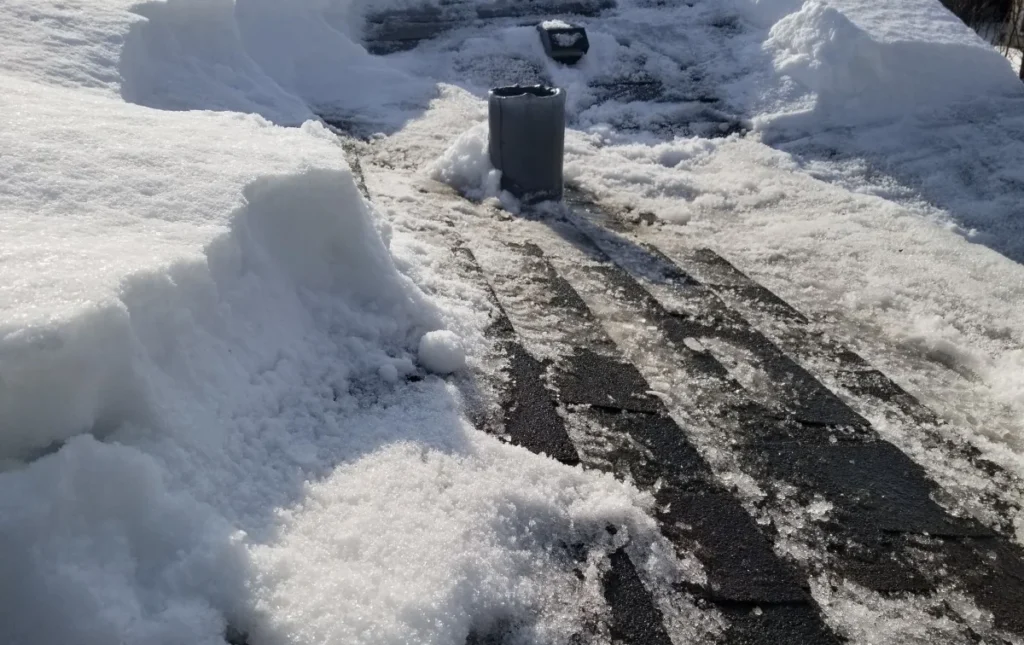
When the temperature drops, the bituminous mass loses its elasticity and stops moving with the roof. As a result, shingles are more susceptible to cracking when impacted (e.g., by a branch or ice) and to mechanical damage when walking on the roof in freezing temperatures. In winter, it is also easier for the edges and corners of shingles to break.
Daily Temperature Fluctuations
If the temperature fluctuates around 32 degrees Fahrenheit during the day, even small amounts of water present in gaps and cracks freeze and thaw, changing their volume, which leads to the expansion of cracks. Therefore, many roof leaks develop in November and March, when the temperature fluctuations are most noticeable.
Accumulated Moisture
Moisture is one of the biggest threats to asphalt roofs in the Chicagoland area. In recent decades, as homeowners have improved insulation, many have neglected ventilation — resulting in trapped moisture, condensation, and even mold growth. Humidity also encourages algae and moss growth, especially on shaded roofs where leaves and debris retain moisture.
While moisture is a threat to asphalt roofs across the America, it’s worth noting that it’s especially dangerous in a mild climate, where the growth conditions for algae are exceptionally good. If it is humid outside and layers of leaves accumulate in shaded areas of the roof, moisture is retained in these areas for a long time.
Strong Wind
Negative pressure acts on the roof, lifting the edges of the shingles. If the asphalt adhesive strips are not properly activated by the sun’s heat or have lost their adhesion over time, the shingles may peel off and be blown away, especially if the roof is attached with improperly chosen nails. As a result, they bend, crack, and in extreme cases, even break completely. Repeated lifting by the wind weakens the adhesion of the shingle, making it more susceptible to damage during subsequent storms.
Hailstorms
Hailstones cause the mineral granules that protect the asphalt from UV rays to crumble. Where the granules are knocked out, the bitumen is exposed and begins to age rapidly. Large pieces of hail can also cause dents and microcracks in the bitumen mass, which over time lead to leaks. In older shingles, which are already less flexible, hail can cause cracking or complete puncture of the shingle.
Damage You May Encounter on Your Asphalt Roof
Loss of Granules
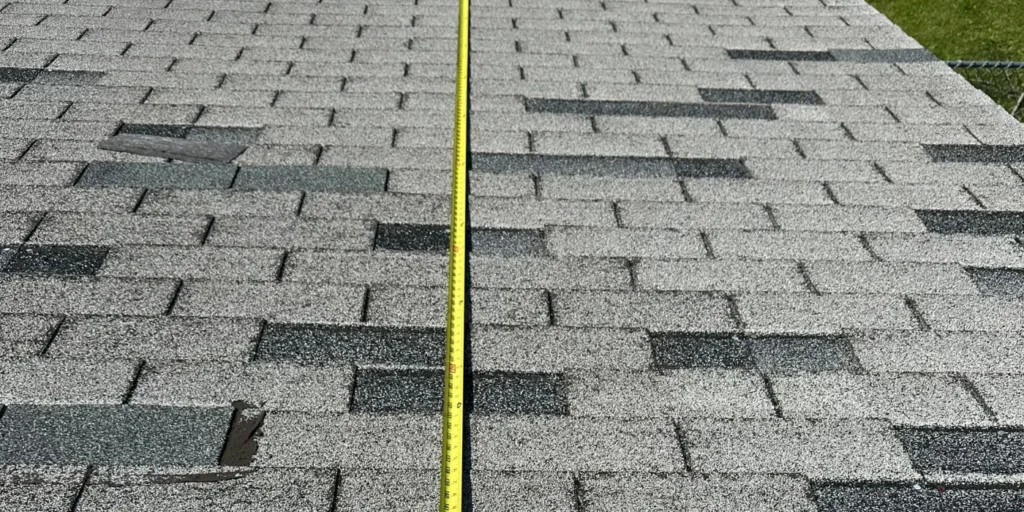
A very common type of damage to the material is the loss of mineral granules, i.e. the “rough coating” that covers the surface of the shingle. There are several types of this defect, which differ in the degree of material degradation. One of the signs of granule loss is its presence in gutters – this means that the granules have detached from the shingles and run off the roof along with the water. However, it is worth remembering that a small amount of granules in the gutters often appears immediately after the shingles are installed, which is completely normal and should not be a cause for concern – in the first few days, the material gets rid of excess granules.
The problem arises when, some time after the roof has been installed, some of the shingles lose some of their granules. Small individual defects are not really visible from the ground, but they can be noticed during the recommended periodic roof inspections. A shingle that has lost its granules becomes faded and smooth to the touch because it loses its rough surface, which is provided by the granules.
If you notice small, isolated areas where there is less granulate than there was originally, this is not yet a cause for concern, although it does mean that the shingles are in the early stages of wear. It is a good idea to protect these areas with bitumen compound or replace individual shingles. The problem arises when you notice large patches of smooth asphalt on your roof. These areas are directly exposed to UV rays and cracking. In this situation, you should definitely consider replacing individual sections of the roof.
If your roof is older (usually over 15-20 years), you may notice uniform granule erosion across the entire surface of the roof. This means that the shingles have reached the end of their life cycle and you will need to replace the roofing.
Cracks and Delamination of Asphalt
Another possible symptom of asphalt shingle wear is cracking and delamination. In the case of cracking, you will see linear cracks or entire networks of cracks. The shingle will feel stiff to the touch, and in many cases, it will be missing granules. This symptom also has several stages. If you see single linear cracks or networks of cracks on some shingles, you can try to repair them yourself. The same applies to delamination – in this case, the shingle looks as if its top layer is lifting or peeling away from the bottom.
To deal with this, you can secure the shingle with asphalt compound or shingle adhesive by applying the selected agent to the cracked area and pressing it down. If the damage is more extensive, you can try replacing individual shingles yourself.
If you see that the shingles are cracked or delaminated across the entire surface of the roof, unfortunately this is a sign that its service life is coming to an end and you need to consider replacing the roofing. This should be done as soon as possible, because such a condition can quickly lead to leaks, and then you will probably have to replace the entire roof.
Bending And Lifting of Edges
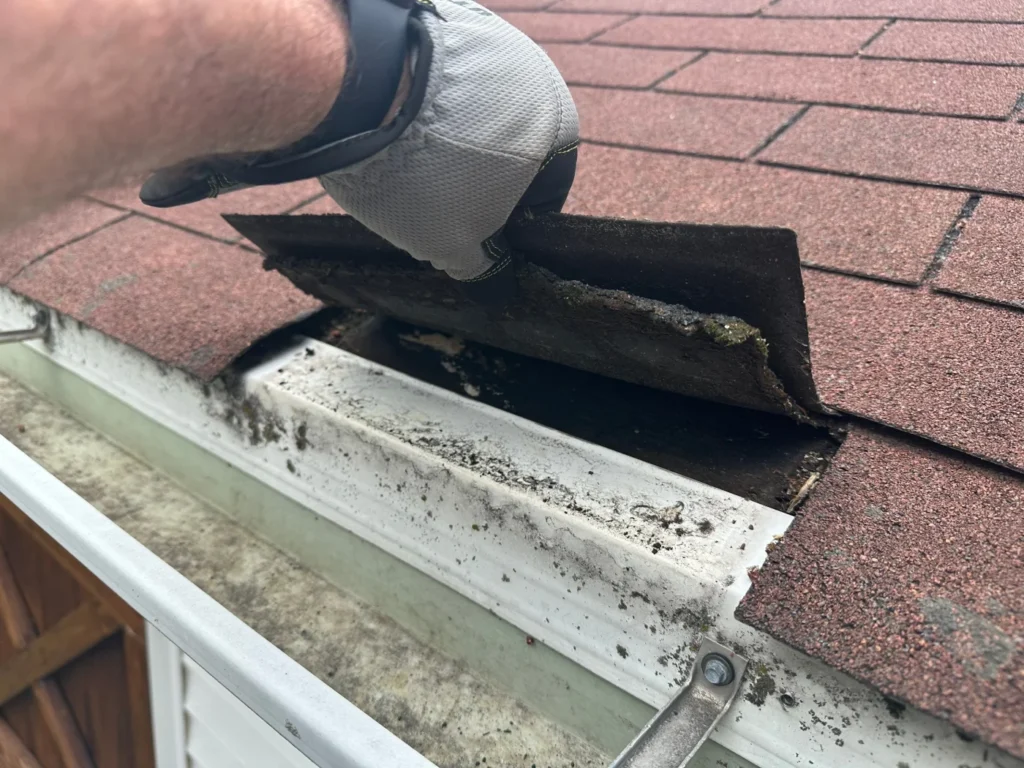
As a result of material aging and strong wind exposure, some shingles may begin to curl upward, bending the edges. This creates gaps between the shingles and the rest of the roof, which is dangerous because dripping water can cause much more damage in such exposed areas. If this phenomenon occurs in isolated areas, you can try to fix the problem yourself. However, remember to do so only if the shingle is not damaged in other ways (cracked, dried out, etc.).
To repair a loose shingle, gently lift it and apply roofing adhesive underneath, then protect it from wind and rain while it sets. As in other cases where this problem occurs on a larger scale, the shingles may be beyond repair, which means that you will probably have to replace the roofing.
The Appearance of Blisters
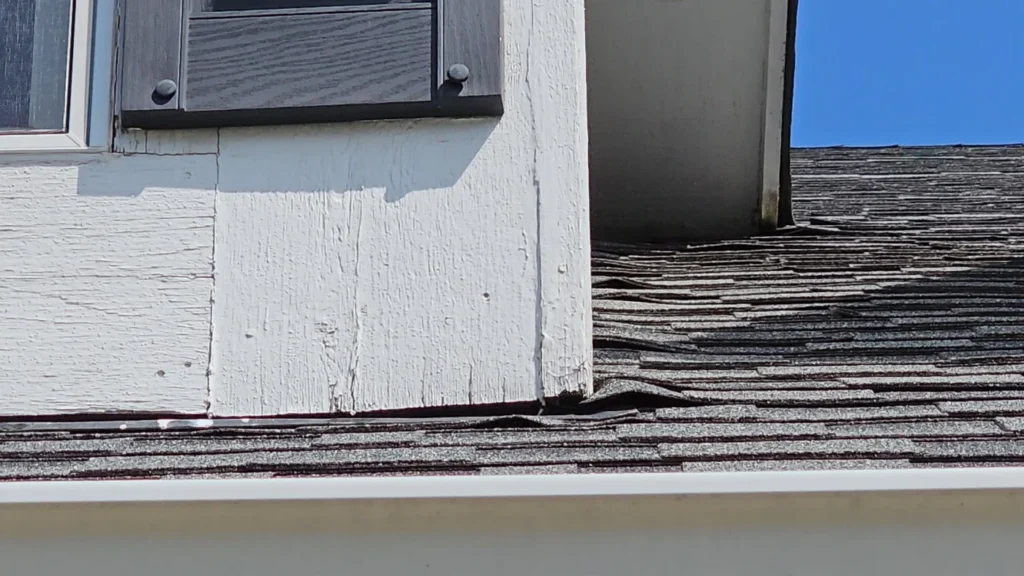
On roofs covered with asphalt shingles, small bulges can sometimes be seen forming in certain places. These are blisters that trap air or water vapor. Blisters generally do not pose a major threat to the roof if they are small and few in number. If you notice them on your roof, you should start observing whether they are growing. If the blisters grow, unfortunately, this means that sooner or later they will burst. Unfortunately, there is nothing you can do about it—you have to wait until they burst and then secure the exposed area with bituminous compound or replace the shingles.
The situation is completely different when the entire surface of your roof is covered with blisters. This could mean one of three things:
- Your roof is poorly ventilated – this may mean that there is insufficient air circulation in the space under the roof, causing heat and moisture to accumulate, and asphalt shingles to “cook” from below, so to speak. This is entirely an installation problem, so after consulting a specialist, you can file a complaint with the contractor;
- Moisture has gotten under the roofing—there may be several reasons for this: leaks in the underlayment, missing or damaged roofing felt, or poorly executed flashings. If a specialist determines that the installation is at fault, you can also file a complaint. However, if the moisture is due to a leaky attic on the house side, the problem lies in the building and it will probably be necessary to repair the insulation and ventilation.
- You purchased defective shingles – although this is rare, it is possible that a specialist will determine that this turn of events is the result of defective shingles. In this case, you can try to file a complaint with the manufacturer.
Punctures And Dents
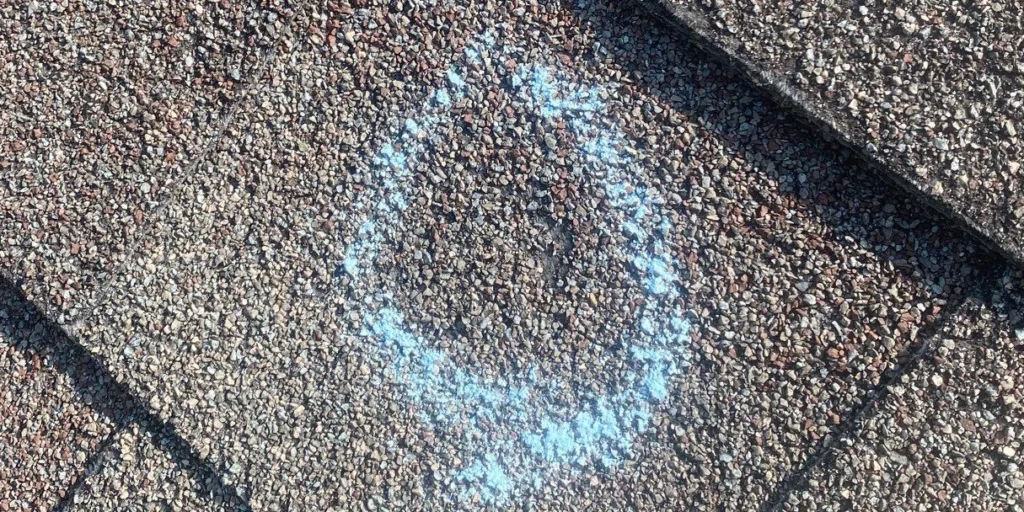
After a severe storm or hailstorm, you may find that your roof has suffered mechanical damage (e.g., due to hailstones or falling branches). This includes punctures in shingles or creased areas. In the case of punctures, you will see holes and large cracks. Repairs depend on the extent of the damage—if the damage is minor and localized, bitumen compound can be used. However, if the holes are larger and the underlay or even the wood is exposed, all damaged asphalt shingles should be replaced as soon as possible—an exposed roof deck without a protective layer can quickly deteriorate.
If you are dealing with small dents and the shingles appear to be relatively undamaged, in most cases no repair is necessary, and you should simply begin to monitor the situation – there is a good chance that the shingles will even out on their own over time.
Biological Growths
There are several groups of microorganisms that can settle on your roof. The least dangerous of these are algae – initially, they only have a negative aesthetic effect. Just because they do not pose a major threat in themselves does not mean that you should ignore them. If left untreated for a long time, algae will grow, creating ideal conditions for the appearance of moss, which is much more dangerous.
To remove algae from asphalt shingles, prepare a mixture of water and bleach in a 1:1 ratio and spray it on the algae. Wait 10-15 minutes and rinse with low-pressure water. Remember to protect the plants below – bleach can have a very negative effect on them. The entire process is described in detail in our article “Dealing with algae on the roof.”
Moss poses a greater threat than algae. Over time, this intruder causes a number of damages that significantly affect the condition of the roof. First of all, it retains moisture, storing water for a long time. This causes constant dampness of the asphalt shingles, which leads to their faster wear and tear. In addition, moss roots push under the shingles, causing them to lift. All this significantly increases the risk of leaks.
What To Do If My Asphalt Shingle Roof is Damaged?
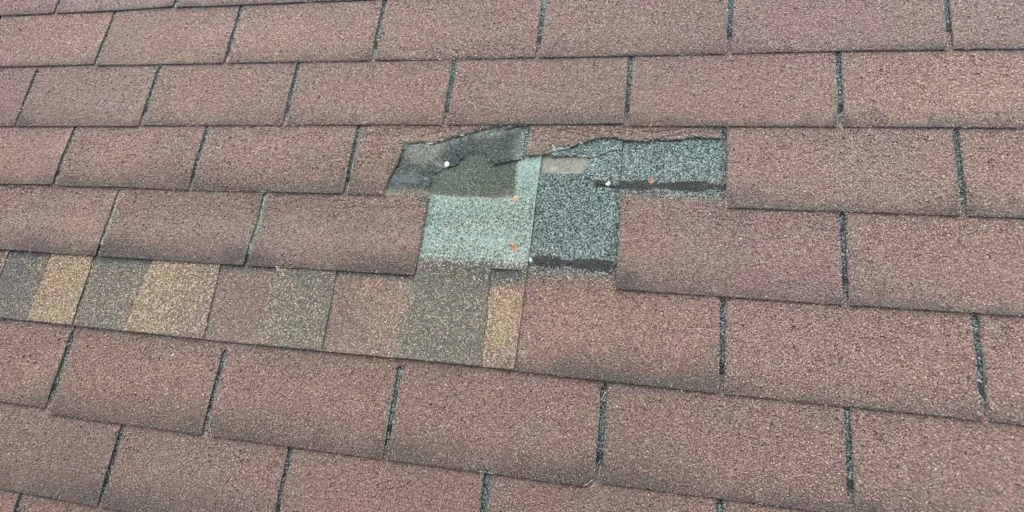
First and foremost, try to realistically assess the scale of damage. Most of the homeowners start to panic or, on the other hand, take the first symptoms too lightly. While your underlayment and ice and water shield should protect your attic for some time, they are not designed to withstand the UV exposure for too long. Therefore, you have some time to react and usually there’s no need to replace the roof within a few days, but you should definitely not wait to schedule an inspection for more than 2 or 3 weeks. However, if it rains, you should act faster.
If your asphalt shingles got damaged by falling tree branch or hail, try to figure out whether there is a hole in the roof. If an answer is yes, it’s recommended to try patching it, for example by laying plastic film on the damaged roof area. It’s obviously just a temporary solution for the problem, but always remember that the first thing you should do is to prevent the water from getting into your house.
After securing the leak, it’s time to find a proven contractor. Even though asphalt shingles are fairly simple material to replace or repair, it’s still crucial to hire an experienced roofer. If you don’t know how to find one, it’s definitely worth reading our article about choosing a solid company.
Summary
The basic rule in roof maintenance is to respond quickly to any changes that occur. Remember that virtually any minor damage, under the influence of environmental conditions, can turn into major damage over time, the repair of which will cost much more than bitumen mass or moss remover. If you have any doubts, contacting a specialist is always a good idea—it will give you the assurance that you are taking the right action and that your roof will remain in good condition for years to come.

